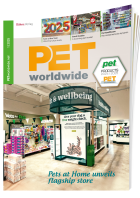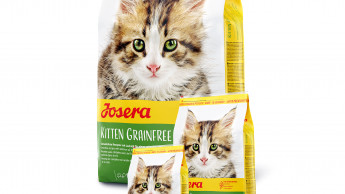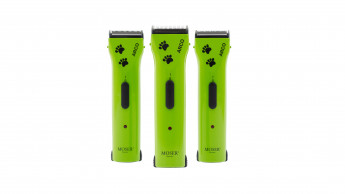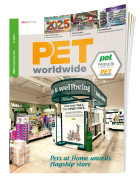"The pets live like Hollywood stars in our facility," says Abigail Stevenson, who has worked for the company for 15 years and has been in charge of research activities for three years. A large number of her colleagues spend several hours a day entertaining the dogs and cats, playing with them and observing and recording their behaviour and feeding habits at the same time. These findings and the papers produced as a result of studies and feeding trials are used to support all Mars pet food products worldwide on an ongoing basis. "One in every four pets across the globe is fed on Mars products," says Abigail Stevenson. "Waltham is the world's leading authority on pet care and nutrition." The Centre is engaged continuously in research into how the life and health of dogs and cats can be improved and made easier. Thus it was in 1999 that the first dog food supported by research data that uses green lipped mussel to maintain joint health was developed. The Waltham Centre makes its findings available to veterinarians in its own professional journal, "Veterinary Focus". The journal, which is read in over 50 countries worldwide, appears on a quarterly basis and is translated into several languages. The editorial team includes numerous vets and scientists from outside the Waltham Centre too. Abigail Stevenson is looking five to ten years ahead with the results of the work, with the focus on developing complete food solutions for dogs, cats and horses respectively. A pet paradise The Waltham Centre has been at its current site since 1975 and is constantly being extended, altered and modernised. Pets are housed in spacious, hygienic quarters, and in contrast to many animal shelters and similar facilities catering for large numbers of animals, Waltham has neither an unpleasant odour nor high noise levels caused by dogs barking. "When designing the pets' quarters, for example, attention was paid to ensuring that the dogs can see what's going on," recounts Abigail Stevenson. "This results in less stress, meaning that they don't bark continuously." This realisation was first implemented in construction 20 years ago and has proved its worth up to now. Another important aspect, especially with regard to keeping cats, is so-called "humanisation". Several cats live in rooms fully equipped with furniture, kitchen appliances and washing machines, and even radios and televisions are operated at regular intervals. This is to…

From Caring Science to the shelf
"The pets live like Hollywood stars in our facility," says Abigail Stevenson, who has worked for the company for 15 years and has been in charge of research activities for three years. A large number of her colleagues spend several hours a day entertaining the dogs and cats, playing with them and observing and recording their behaviour and feeding habits at the same time. These findings and the papers produced as a result of studies and feeding trials are used to support all Mars pet food products worldwide on an ongoing basis. "One in every four pets across the globe is fed on Mars products," says Abigail Stevenson. "Waltham is the world's leading authority on pet care and nutrition." The Centre is engaged continuously in research into how the life and health of dogs and cats can be improved and made easier. Thus it was in 1999 that the first dog food supported by research data that uses green lipped mussel to maintain joint health was developed. The Waltham Centre makes its findings available to veterinarians in its own professional journal, "Veterinary Focus". The journal, which is read in over 50 countries worldwide, appears on a quarterly basis and is translated into several languages. The editorial team includes numerous vets and scientists from outside the Waltham Centre too. Abigail Stevenson is looking five to ten years ahead with the results of the work, with the focus on developing complete food solutions for dogs, cats and horses respectively. A pet paradise The Waltham Centre has been at its current site since 1975 and is constantly being extended, altered and modernised. Pets are housed in spacious, hygienic quarters, and in contrast to many animal shelters and similar facilities catering for large numbers of animals, Waltham has neither an unpleasant odour nor high noise levels caused by dogs barking. "When designing the pets' quarters, for example, attention was paid to ensuring that the dogs can see what's going on," recounts Abigail Stevenson. "This results in less stress, meaning that they don't bark continuously." This realisation was first implemented in construction 20 years ago and has proved its worth up to now. Another important aspect, especially with regard to keeping cats, is so-called "humanisation". Several cats live in rooms fully equipped with furniture, kitchen appliances and washing machines, and even radios and televisions are operated at regular intervals. This is to…

 Menü
Menü






 5-6/2008
5-6/2008












 Newsletter
Newsletter